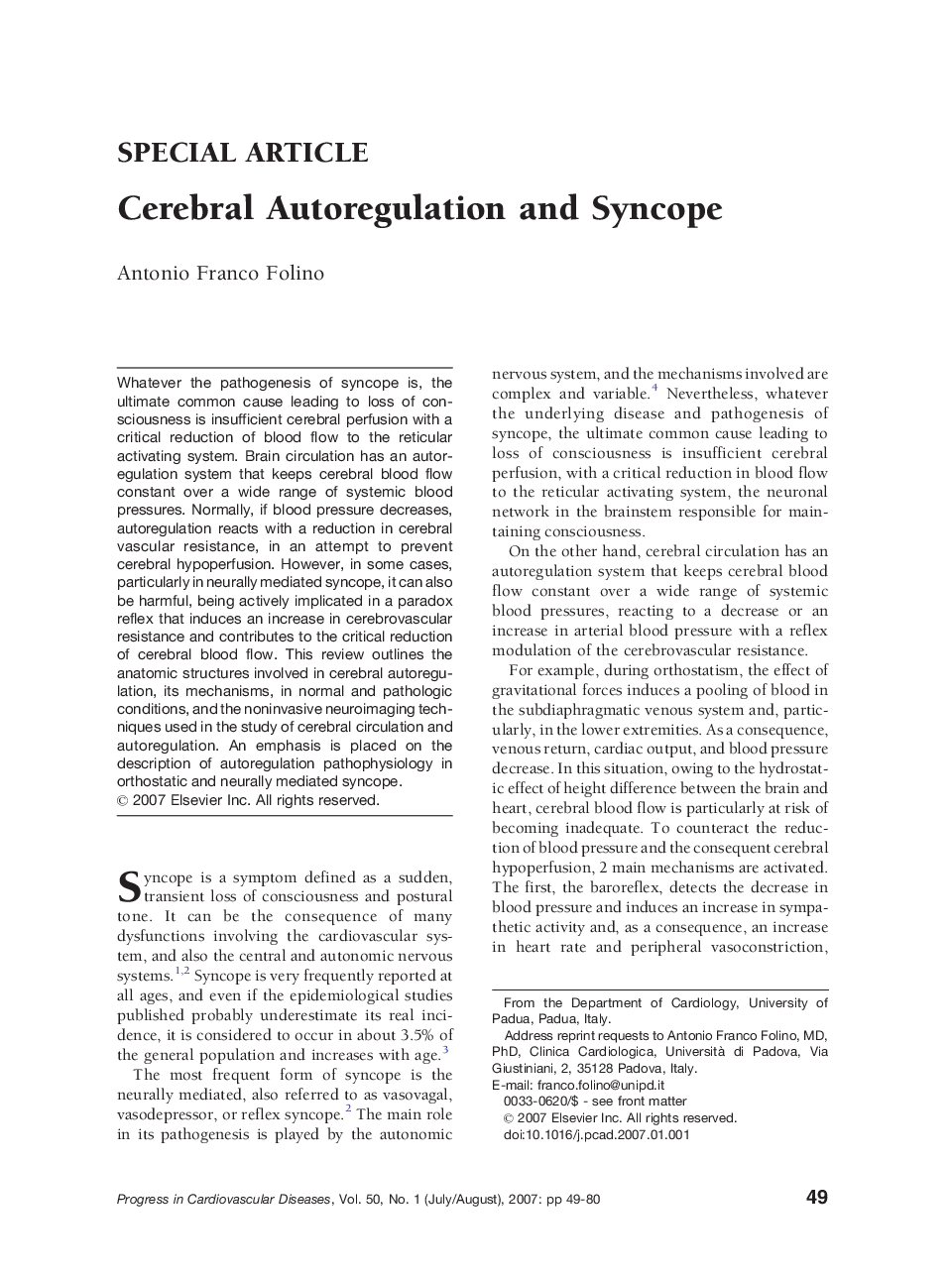| Article ID | Journal | Published Year | Pages | File Type |
|---|---|---|---|---|
| 3006783 | Progress in Cardiovascular Diseases | 2007 | 32 Pages |
Whatever the pathogenesis of syncope is, the ultimate common cause leading to loss of consciousness is insufficient cerebral perfusion with a critical reduction of blood flow to the reticular activating system. Brain circulation has an autoregulation system that keeps cerebral blood flow constant over a wide range of systemic blood pressures. Normally, if blood pressure decreases, autoregulation reacts with a reduction in cerebral vascular resistance, in an attempt to prevent cerebral hypoperfusion. However, in some cases, particularly in neurally mediated syncope, it can also be harmful, being actively implicated in a paradox reflex that induces an increase in cerebrovascular resistance and contributes to the critical reduction of cerebral blood flow. This review outlines the anatomic structures involved in cerebral autoregulation, its mechanisms, in normal and pathologic conditions, and the noninvasive neuroimaging techniques used in the study of cerebral circulation and autoregulation. An emphasis is placed on the description of autoregulation pathophysiology in orthostatic and neurally mediated syncope.
